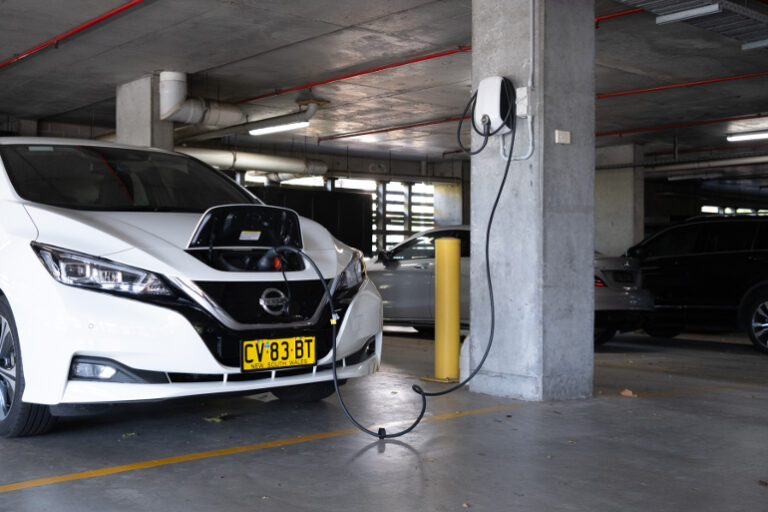It’s been more than a decade since the Nissan LEAF first arrived in Australia as the world’s first mass-market EV. Last year the new look Nissan LEAF arrived in Australia to compete with the latest generation of electric cars that have suddenly become popular with new car buyers.
Despite being around for 10 years, and the only vehicle with V2G capability, the LEAF hasn’t been able to ride the EV sales wave in Australia for a number of reasons. I spoke to Ben Warren, National Manager Electrification and Mobility at Nissan, to learn more about the opportunities for the LEAF and Nissan’s e-POWER technology.
“Availability is getting better. We’ve had a couple of years of pretty tight stock availability, of everything, not just not just LEAF,” says Warren. “But thankfully, we actually started to see more consistent arrivals. So we’re not seeing thousands of them arrive. But we’re at least getting regular monthly shipments now. So the wait lists are starting to come down. It’s depending on colour and whether you wanted an e+ or not, there’s a waitlist depending on what variant you want. But as a general rule, it’s starting to come down.”
“LEAF always had a longer lead time than other cars purely for the fact that it’s built in the UK. So it spends three months on a boat. Whereas the stuff out of Japan spends one month, so there is a slightly longer lead time. There’s a little bit of stock in the dealers, there’s some coming, so it’s not quite the nine to 12 months it was six months ago.”
“LEAF’s built in three locations around the world. So Japan, the UK in Sunderland, and the U.S. as well. So our spec comes from the UK plant purely because it most closely aligns with our requirements.”
The LEAF isn’t the only EV in the Nissan range globally. Last year the Ariya was launched and is now on sale in Japan, Europe and the U.S. with significant order volume from fleet and private buyers. It’s available in 2WD and AWD with different battery configurations and specification levels.
Nissan is also selling the Townstar electric small van in Europe. It’s based on the Renault Kangoo platform which is an option because for the Nissan/Mitsubishi/Renault alliance.
Warren also hinted that there were some more Nissan EVs coming with concepts and other images being seen in the automotive media.
Locally in the fleet market, Nissan have had success with the Navara and the popular SUVs which were reaching the end of their model cycle. Last year Nissan launched brand new versions of X-Trail, Qashqai and Pathfinder to reinvigorate the discussion with Fleet Managers and attract novated lease buyers back into the showrooms.
“LEAF has gone pretty well in the fleet market because it’s one of the more fleet accessible products. Still relatively small volumes but that’s been the EV market. Across the fleet gamut, Navara goes well. X-Trail and Qashqai have also been pretty successful products.”
“With the new X-Trail we’ve got the e-POWER powertrain, which is an option within the X-Trail lineup and is is starting to get a fair bit of attention, and really positive reviews. So I think that’s a powertrain that we’re pretty bullish on, and not surprised at how eager the take up has been. But it’s certainly pleasing to see.”
“The petrol engine is purely a generator to charge the battery, and can also feed directly into the inverter if it has to under heavy acceleration. But the wheels are only driven by the electric motors. And so what that means for the X-Trail all-wheel-drive with the dual motors, it drives like an EV.”
When preparing a fleet transition plan to reduce emissions, the recommendations don’t always include the purchase of electric vehicles. So with the LEAF and e-POWER X-Trail in the Nissan range, Fleet Managers have several options to match the transition plan to their operational requirements.






